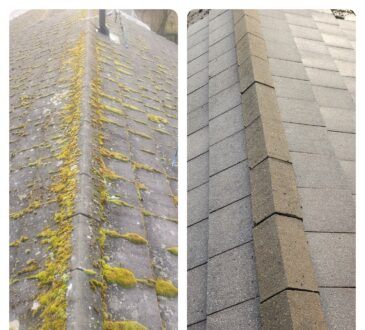
When undertaking a roofing project, it’s imperative to recognize that weather is not just a passing topic for small talk; it’s a fundamental factor that can profoundly influence the outcome of your roofing installation. As we delve deeper into this subject, we’ll uncover the intricate relationship between weather conditions and roofing projects, highlighting how precise timing and weather-related decisions can make all the difference. Weather factors can unexpectedly sway your roofing installation timeline, from the scorching summer heat to the frigid cold of winter.
While you may have already chosen the perfect roofing services provider and the ideal roofing materials, your project’s ultimate success often hinges on when the work gets underway. The roof installation Los Angeles project timeline may only sometimes align with your preferred schedule, and understanding the reasons behind this can be enlightening.
Rainfall
Rainfall is a common weather element that can substantially impact roofing projects. When installing a new roof or repairing an existing one, it’s essential to consider how rain can affect the timeline.
Delay in Material Delivery
One of the primary ways rainfall affects roofing timelines is by causing delays in material delivery. Most roofing materials are sensitive to moisture; getting them wet during transport or storage can compromise their quality. Suppliers may postpone deliveries during heavy rain to avoid damage to the materials. This delay can set your project back, potentially exposing your home to the elements for an extended period.
To mitigate this issue, it’s crucial to work closely with your roofing contractor and schedule deliveries during periods of dry weather. Proper planning and coordination ensure that materials arrive on time, minimizing delays in the project timeline.
Safety Concerns for Roofers
Aside from material delays, rain can pose safety concerns for roofers working on the project. Wet roofing surfaces can become slippery, increasing the risk of accidents and injuries. Roofers must exercise caution and take additional safety measures during rainy weather to ensure their well-being.
Roofing contractors should have safety protocols for working in wet conditions, including using non-slip footwear safety harnesses and adequately setting up scaffolding and ladders. By prioritizing safety, contractors can minimize the impact of rain on the roofing timeline while ensuring the well-being of their team.
Temperature Fluctuations
Temperature fluctuations are another weather element that can affect roofing projects, especially during the installation of shingles and the application of sealants and adhesives.
Shingle Installation Challenges
Temperature plays a critical role in shingle installation. Extreme cold or hot weather can affect the flexibility and adhesion of shingles. In cold weather, shingles can become brittle and may crack during installation. Conversely, shingles may become overly pliable in hot weather, making them prone to deformation.
To address these challenges, roofing contractors must schedule installations during moderate temperatures. Spring and fall are often the ideal seasons for shingle installation, as the weather is typically milder, allowing for better adhesion and durability.
Sealant and Adhesive Performance
Sealants and adhesives are essential for roofing projects, and temperature fluctuations can significantly impact their performance. In cold weather, sealants may take longer to cure, potentially extending the project’s timeline. Conversely, high temperatures can cause sealants to cure too quickly, affecting their effectiveness.
Roofing professionals must choose sealants and adhesives suitable for the project’s specific weather conditions. They should also consider using temperature-appropriate application techniques to ensure proper bonding and sealing.
Wind and Its Role in Roofing Schedules
Wind is a weather element that can disrupt roofing schedules, particularly during high winds. Understanding its potential impact on both safety and materials is crucial.
Safety Measures During High Winds
High winds can pose a significant risk to roofers working on a project. Wind gusts can make maintaining balance on the roof challenging, increasing the likelihood of accidents and injuries. Roofing contractors must closely monitor wind conditions and implement safety measures when winds exceed safe thresholds.
Safety measures may include temporary suspension of work during high winds, using wind-resistant equipment, and installing temporary roofing covers to protect the work area. These precautions help ensure the roofing team’s safety and prevent project damage.
Impact on Roofing Materials
Aside from safety concerns, strong winds can also damage roofing materials. Loose materials, such as shingles or roofing membranes, can be lifted or torn away by wind gusts. This results in material wastage and necessitates roofing repair and replacement Encino and potential project delays.
To mitigate wind-related issues, roofing contractors should use appropriate fastening techniques and choose wind-resistant roofing materials. Regular inspections and maintenance can help identify and address loose materials before they become a problem.
Extreme Weather Events: Hail and Storms
Hailstorms and severe storms are extreme weather events that can cause significant damage to roofing systems—understanding how to assess hail damage and recover after a storm is vital for maintaining roofing project timelines.
Assessing Hail Damage
Hail can wreak havoc on roofing materials, leaving dents, cracks, and punctures behind. Assessing the extent of hail damage is essential before proceeding with repairs or replacements. Roof repair specialist Los Angeles should conduct a thorough inspection to identify compromised areas and determine the best course of action.
Hail damage assessments should be done promptly after a storm to prevent further water infiltration and structural issues. Proper documentation of the damage is crucial for insurance claims and project planning.
Recovery After a Storm
Recovering from a severe storm is a complex process that requires careful planning and execution. After a storm, roofing contractors should prioritize emergency repairs to prevent further damage. This may include temporary tarping or patching damaged areas to keep the interior of the building protected from water intrusion.
Once immediate repairs are addressed, contractors can work on a comprehensive plan to restore the roof to its pre-storm condition. This may involve material replacement, structural repairs, and addressing any underlying issues contributing to the storm damage.
Seasonal Variations in Weather
Seasonal variations in weather present unique challenges for roofing projects throughout the year. Summer and winter bring their own set of considerations for contractors and homeowners.
Summer Roofing Challenges
Summer brings the challenge of scorching temperatures and potential heat-related issues for roofers. Working on a hot roof can be physically demanding and may require additional precautions to prevent heat-related illnesses. Contractors should schedule work during more excellent parts of the day, provide shade and hydration for their team, and use appropriate protective gear.
Winter Roofing Considerations
Winter presents different challenges, including freezing temperatures, ice, and snow. These conditions can make roofing projects more challenging and potentially hazardous. Contractors need to ensure that roofing materials are stored and handled correctly in cold weather, and they may need to use heating equipment to facilitate roof installation in Encino.
Mitigating Weather-Related Delays
Mitigating weather-related delays is essential for maintaining roofing project timelines and ensuring client satisfaction. Here are some key strategies to consider:
Planning and Preparation
Thorough planning and preparation are critical for successfully managing weather-related delays. Contractors should monitor weather forecasts, adjust schedules, and plan for contingencies in adverse conditions. This proactive approach can minimize disruptions and keep the project on track.
Communication with Clients
Effective communication with clients is vital throughout the roofing project, mainly when weather-related delays occur. Contractors should keep clients informed about any schedule changes, the reasons behind delays, and the steps being taken to address them. Transparent communication builds trust and helps manage client expectations.
In conclusion, weather factors have a substantial impact on roofing installation timelines. Rainfall, temperature fluctuations, wind, extreme weather events, and seasonal variations all play a role in the success of a roofing project. By understanding these factors and implementing appropriate strategies, roofing contractors can navigate weather-related challenges and deliver high-quality roofing solutions on time.




